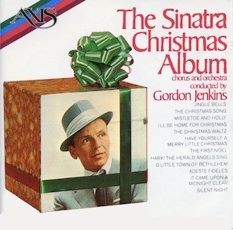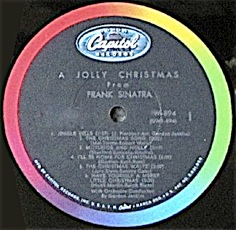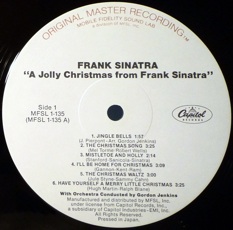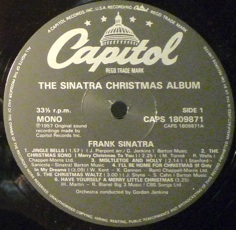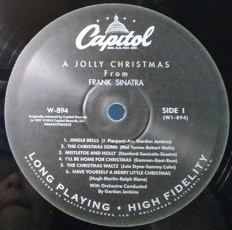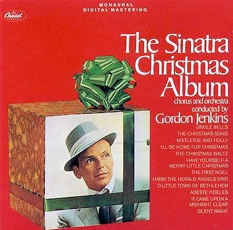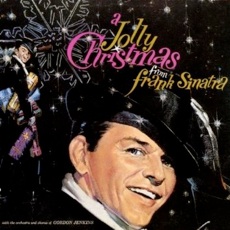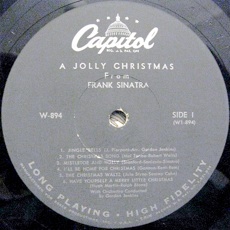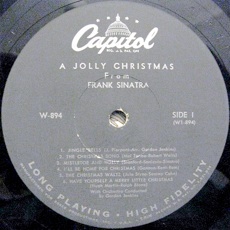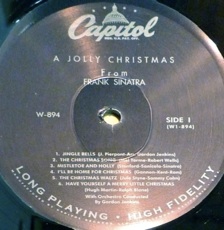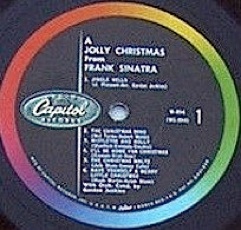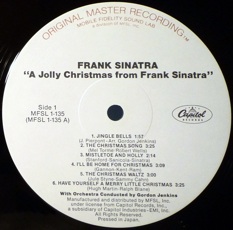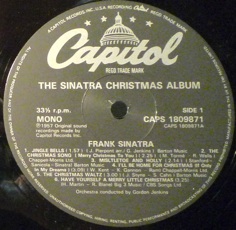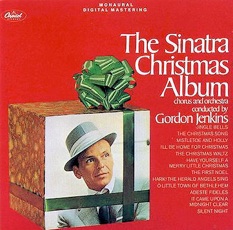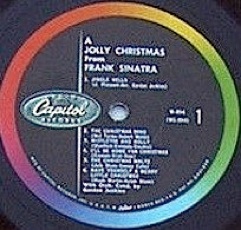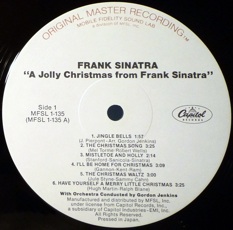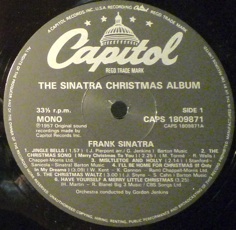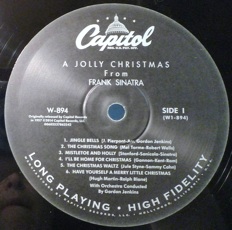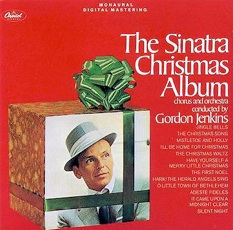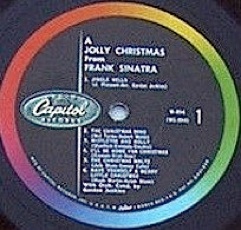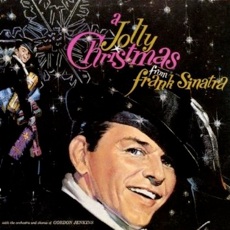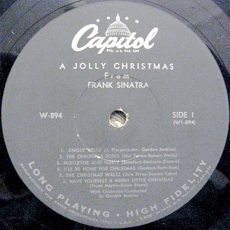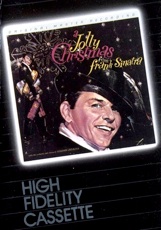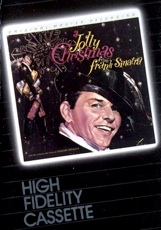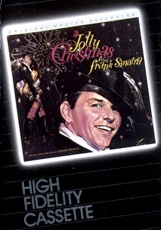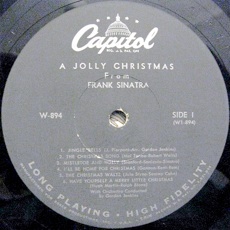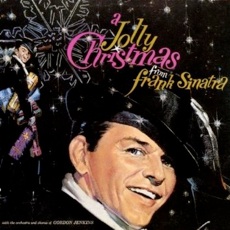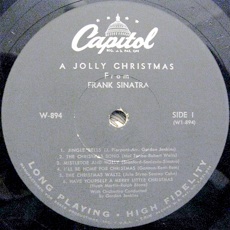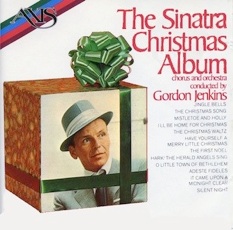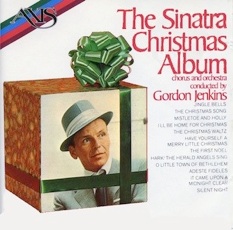A Jolly Christmas from Frank Sinatra - 1957
A Christmas Album that Stands the Test of Time
For many artists, a Christmas album seems to be something that they grind out in a going-through-the-motions fashion, and if the results are even close to almost-passable, the album will grace store shelves every November and December for years or decades to come. A few are bona fide classics that deserve their stature in the holiday pantheon, but for every Merry Christmas by Bing Crosby there are a dozen Barry Manilow: Happy Holidays.
In 1957, Mr. Sinatra recorded the album Where are You with Gordon Jenkins on three-track tape for eventual stereo release. Sadly, A Jolly Christmas, which was recorded after Where are You, was apparently recorded full-track mono only, probably because it was “just a Christmas record.”
One benefit of being “just” a Christmas record is that it flew under the radar when Capitol started messing with their Sinatra tapes in the early 60s. No “reverbed” version was ever created in the LP era, unlike all but one of the mono titles that had preceded it, although a Duophonic version did eventually appear, seeing repeated use (often without any mention of “Duophonic” on the cover) through the 1980s on LP releases bearing the DW, DT, SM, SMX, and SL prefixes, as well many tape releases.
At right are images from phase scope analysis showing, left to right, 1.) MFSL; 2.) Walsh; 3.) Norberg; 4. The “Rat Pack” reissue. (Thanks, Bob F.) On a true mono recording, only a vertical line will appear, as everything is 100% “in phase.” When things are completely out of phase, only a horizontal line will appear. For stereo material, you wlll typically get results somewhere in between. That Norberg mastering is far from mono......


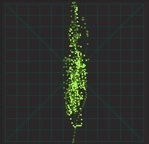
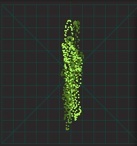
If you were considering getting the 2010 RSD release partially because it includes the inappropriate exclamation point after Silent Night, keep in mind that the MFSL has that as well, and with much better sound by comparison. Of course, it also uses the “negative” (blacks and whites reversed) image. Oops. (See photo at right.)
Also, to see a brief video about the odd sonic characteristics of the 2010 Record Store Day LP release, please click here.
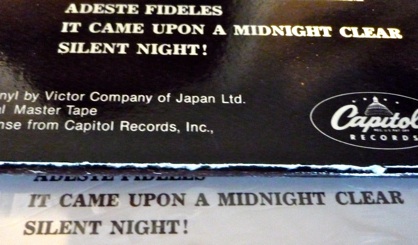
Thank you to all who contributed clips and to those who actually take the time to listen and to share their thoughts. Whichever version you prefer, get a copy, play it, and enjoy it, as the music is fantastic.
Also, as Frank himself says on side one, “Merry Christmas!”

As stated above, many LP and tape versions, even if not labelled as being Duophonic, are, in fact, Duophonic. At left is a version to avoid: 1985’s SL-9240 vinyl release, with only 9 songs, one of which is the non-album track, “White Christmas.” Eight of the nine tracks are Duophonic, while “White Christmas” is in pre-Duophonic fake stereo, which is mildly less horrid (and sums to mono very well).
How bad are Duophonic tracks for A Jolly Christmas and its assorted reissues? Have a listen: SMX LP clips.mp3


Audio Clips - Jingle Bells
iTunes offers a 30-second sample of “Jingle Bells” at no charge. All clips posted on this page fall within that 30-second window, available via the iTunes link at left.
Above: 1983(?) MFSL LP, mastered by Jack Hunt
Above: 1983 UK LP (same mastering/stampers re-used for later UK MFP release)
Above: 1987 CD, mastered by Larry Walsh. (This mastering was issued with different front covers over the years.) Mastering reused, with mild compression, for 2003 UK CD.
Above: 1999 CD, mastered by Bob Norberg, courtesy Bob F. (This mastering was issued with different covers over the years, sometimes incorrectly credited to Larry Walsh.)
Above: 2014 LP
Above: 2014 CD. NOTE: Same mastering as 2014 HD download.
Above: 2010 LP, mastered by Ron McMaster. NOTE: Likely sourced from 1999 Bob Norberg CD mastering (not true mono). To view a brief video about this release, click here.
Above: D1 LP
Above: D2 LP
Above: Later 12:00 rainbow mono LP, courtesy GregW
Above: N22#2 LP, courtesy Simon A
Above: N27 LP, courtesy Bozburn
Audio Clips - The Christmas Song
iTunes offers a 90-second sample of “The Christmas Song” at no charge. All clips posted on this page fall within that 90-second window, available via the iTunes link at left. (To access the 90-second free iTunes clips, click VIEW, then “View in iTunes” when prompted.)
Above: 1983(?) MFSL LP, mastered by Jack Hunt
Above: 1983 UK LP (same mastering/stampers re-used for later UK MFP release)
Above: 1987 CD, mastered by Larry Walsh. (This mastering was issued with different front covers over the years.) Mastering reused, with mild compression, for 2003 UK CD.
Above: 2014 LP
Above: 2014 CD. NOTE: Same mastering as 2014 HD download.
Above: N22#2 LP, courtesy Simon A
Above: N27 LP, courtesy Bozburn
Transitional clip, starting with the 1987 CD, moving to the 2014 CD: LINK
Audio Clips - The First Noel
iTunes offers a 90-second sample of “The First Noel” at no charge. All clips posted on this page fall within that 90-second window, available via the iTunes link at left. (To access the 90-second free iTunes clips, click VIEW, then “View in iTunes” when prompted.)
Above: 1983(?) MFSL LP, mastered by Jack Hunt
Above: 1983 UK LP (same mastering/stampers re-used for later UK MFP release)
Above: 1987 CD, mastered by Larry Walsh. (This mastering was issued with different front covers over the years.) Mastering reused, with mild compression, for 2003 UK CD.
Above: 2014 LP
Above: 2014 CD. NOTE: Same mastering as 2014 HD download. (See HDTracks’ own disclaimer, reposted at right)
Above: N21#2 LP, courtesy Simon A
Above: N28#2 LP, courtesy Bozburn
Transitional clip, starting with the 1987 CD and transitioning to the 2014 CD: LINK
(Side two tracks are much more tonally-similar than the side one tracks were. (See transitional clip near top of page for Jingle Bells.
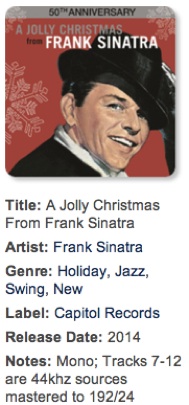
HDTracks disclaimer
Above: 1983(?) MFSL cassette
Above: 1983(?) MFSL cassette
Above: 1983(?) MFSL cassette
Above: 1999 CD, mastered by Bob Norberg, courtesy Bob F. (This mastering was issued with different covers over the years, sometimes incorrectly credited to Larry Walsh.)
Above: D3#2 LP, courtesy “Arkoffs”
Above: D5#2 LP, courtesy “Arkoffs”
Above: 1999 CD, mastered by Bob Norberg, courtesy Bob F. (This mastering was issued with different covers over the years, sometimes incorrectly credited to Larry Walsh.)
Above: D3#2 LP, courtesy “Arkoffs”
1999 remaster (reused in 2010?): We Control the Horizontal; We Control the Vertical
2010 RSD LP Quirks
Duophonic, Etc.
There are many fine mono versions of this album, but if I had to chose “the best,” to my ears, the finest-sounding version of this album is the MFSL LP from the 1980s, with the 1987 CDs, both the common USA Larry Walsh mastering and the hard-to-find Australian EMI/Axis disc, as the best digital versions (and excellent choices regardless of format). Other standout versions sampled above include the N27 LP and the 1983 UK LP, in my opinion, but not quite the equal of those first three. Here are some clips to illustrate what I am hearing:
Clip set #1: starts with N27 LP, switches to MFSL, then to D3#2 (20 seconds per segment). Click to listen: ChristmasSongsN27-MFSLLP-D3#2.wav . To my ears, the N27 and MFSL are surprisingly similar in terms of tone, while tone takes a mild hit on the D3#2 LP. (It’s still not bad, just not “the best.”) Why did I not place the N27 as a top choice? MFSL tops it considerably in terms of dynamics (see Clip Set #2, below). Regardless, the N27 clip is excellent.
Clip set #2: I know there are many who poo-poo the whole dynamics thing, and considering the way that DR numbers are bandied about, much talk of dynamics, at least as it relates to numbers, deserves to be poo-pood, as many numerical differences either do not translate or barely translate to audible changes. Often, though, a reduction in dynamics is clearly AUDIBLE if you know what to listen for. “Jingle Bells” has a pretty good illustration of audible compression. (as opposed to mere numerical differences). Here are three clips from Jingle Bells to illustrate what I’m hearing.
•Clip 2a: JingleClip1xMFSLLP-N27-MFSLLP-N27.wav This very brief clip covers only the phrase “Oh what fun it is to ride in a one-horse open sleigh,” and I’d highlight the words “ride” and “one-horse.” In the MFSL version, which is uncompressed, those words are naturally louder than the other words in the phrase. On the N27 copy, it’s like when somebody is making a S’more and as they push down the graham crackers, the marshmallow oozes out the sides because it has nowhere else to go. It’s not being allowed to fill the space (fill the audible volume) that it WANTS to fill naturally. It’s compressed. THE ORDER ON THIS CLIP IS: MFSL LP, N27 LP, MFSL LP, N27 LP. The volume ebbs and flows on the MFSL LP, but on the N27, those words are constrained somewhat, and sound a little pinched.
•Clip 2b: JingleClip2xN27-MFSLLP-N27-MFSLLP.wav This clip contains only “Dashin’ through the snow (doo-doh) in a one-horse open sleigh (doo-day).” THE ORDER ON THIS CLIP IS: N27, MFSL, N27, MFSL. Focus this time on the doo-doh/doo-day bit, and on the word “horse.” Again, the N27 is trying to expand/bloom in those spots, while the MFSL *does* expand/bloom in a very natural-sounding way.
•Clip 2c: JingleClip3N27-MFSLLP-N27-MFSLLP.wav - “o’er the fields we go, laughin’ all the way.” Listen especially to the words “laughin’ all.” THE ORDER ON THIS CLIP IS: N27, MFSL, N27, MFSL, and again, on the words “laughin all,” the vintage LP is being subtly pressed down, while the MFSL expands (“breathes”) freely.
Recommendations

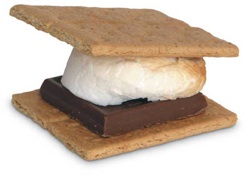
Recorded July 10, 16, 17, 1957
Arrangements: Gordon Jenkins
Conducted by Gordon Jenkins
With the Ralph Brewster Singers
Produced by Voyle Gilmore
Released as A Jolly Christmas from Frank Sinatra, September 30, 1957
Above: 1987(?) Australian CD.
Above: 1987(?) Australian CD.
Above: 1987(?) Australian CD.
Notes regarding the 1987 CD mastered by Larry Walsh
Overall, this is a very well mastered disc, well worth purchasing; a disc that I highly recommend. It does, however, have a couple of minor flaws.
1.) The fade to silence at the end of “The Christmas Waltz” (album version) is slightly early; 2.) The string passage at the beginning of “The First Noel” is either spliced in from a source tape at a lower speed, or is experiencing tape drag. Regardless, it is initially below pitch, and reaches correct speed prior to the vocal entrance. This remains a very fine sounding release overall.
Notes regarding the 1987(?) Australian CD
This is an intriguing release, and certainly an outlier. The overall quality is excellent, and the disc has the widest dynamic range of any release in any format. It has a bit of an “un-polished” quality to it: The transfer from mono tape was made with stereo playback heads (but with only very subtle artifacts -- nothing to worry about); fade-ups and fade-downs are not as tightly “trimmed up” as on other digital releases (which is arguably a good thing -- see notes about the Walsh CD above); the overall tonality strikes me as being akin to an “unmastered” transfer, i.e, the tape was transferred to digital, and that digital transfer appears here with only minimal cleanup for CD release. Overall sound is very good, and dynamics, as suggested, are wide-open.
Very surprisingly, the 2014 digital releases, including the HD release which carried a disclaimer about being sourced from a “44 khz” (sic - it would have been either 44.1 or 44.056 kHz) source for tracks 7-12, stay in sync with this Australian version, not the USA Walsh or Norberg releases. It has been brought up before that Capitol began transferring their “vintage” masters to U-Matic digital masters in the early 80s (1983 or so?) for backup/preservation, and I cannot help but wonder if that raw digital transfer was dubbed for EMI/Australia for use on this release in the 80s, and if that same transfer wound up being the source (preserved in who-knows-what format by that much-later juncture) for tracks 7-12 on the 2014 HD release. (Note: the 2014 digital releases are heavily compressed.)
